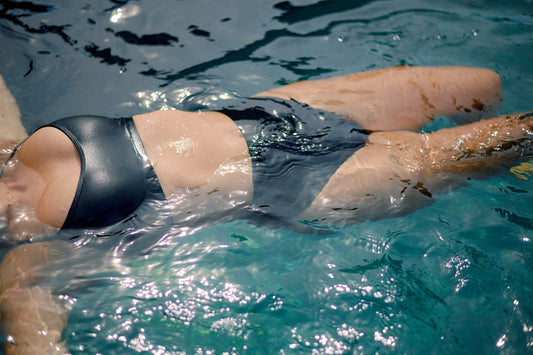
How to Care for Your Reusables
Ariane Bell VilaOne of the things that gave me pause when I was first looking into reusables for my period was how to care for them.
I remember having thoughts like... that’s a lot of blood? Isn’t that kind of gross? How do I clean them? Is it safe to reuse something that’s had my blood on it? What if I’m out and want to change a pad? Or empty out my cup?
I’m here to tell you not to worry! There’s a bit of a learning curve when it comes to reusables, but it really doesn’t take long before the whole process becomes part of your day-to-day routine.

First, the general process for our fabric products (pads, liners, and undies) is, when you’re done with them, rinse them out in cool water and then toss them in the washing machine & dryer with your regular laundry. As with any garment, wash them with like colours.
Some other tips to extend the lifespan of your pads & undies:
- Avoid bleach or fabric softener - they will decrease the performance and lifespan of your pads, liners, and undies.
- Don’t leave your pads soaking in water - this can lead to bacterial growth and mold.
- Avoid frequent use of Hydrogen Peroxide and Oxygen bleach products - they might be great for removing blood stains but they’re also super harsh on natural fibers. Instead, try our Stain Eraser.
If you’re only going to be doing laundry once a week, it’s alright to rinse out your pads/undies and leave them somewhere with good airflow until laundry day.
But what about changing them when I’m out of the house?
We carry wet/dry bags that are great for this! You can also use a toiletries bag.
Fold up some spare pads to bring with you, and then when you need to change, you can swap your used one out for a fresh pad.
I thought they were super absorbent? Why would I need to change it if my flow isn’t that heavy?
This is totally a personal preference thing. For example, sometimes I’m not a huge fan of how a used booster in my undies feels after I go to the washroom when I go to pull them up. (It’s a little too cold for me!) So I just swap out the old booster for a fresh one to feel extra comfortable.

Let’s talk cups.
Yes, let's! Our cup conveniently holds one ounce (30 ml) of fluid and can be worn up to 12 hours a day. Depending on your flow, you may only need to empty out your cup twice a day (once in the morning after you wake up, once before you to bed). If you find your cup consistently overfloweth (not just a small leak, but actually more than 30ml of fluid in small periods of time), you may want to get in touch with your doctor about having a heavy flow.
To clean your cup you should use warm water and a mild, unscented and oil-free soap.
There are some tiny holes located below the rim that should be kept clear and clean. (They help with keeping things leak-proof!) Gently stretch each hole under warm running water to remove any debris.
At the end of your cycle, thoroughly wash, rinse and dry the cup completely. Store it in the cotton bag provided, not in a plastic bag or airtight container.
If you’re out during the day and need to empty your cup in a public washroom, it’s ok to empty it out and clean it off with toilet paper/a paper towel. Wash your hands thoroughly before heading to the stall!
Make sure you check the cup for any pieces of paper that may have stuck to it and remove them before reinserting the cup. Some people also like to bring a small bottle of water with them to rinse out the cup, but it’s not necessary.
Just remember to give your cup a proper clean the next chance you get!
How often do I need to get a new cup?
Since the Aisle cup is a personal hygiene product, we recommend you inspect it regularly for signs of deterioration such as a sticky or powdery film, severe discoloration or odor, etc. If you detect any of these signs, or you experience irritation, replace it with a new one!
Depending on factors like vaginal pH, how well and often the cup is cleaned, what you clean it with etc., the lifespan of your cup may vary. Our general guideline is to replace it once a year, but ultimately, it's up to you to decide when you feel it's necessary.
Some discoloration over time is totally normal. Some folks like to sterilize their cup by boiling it at the beginning and end of their cycle for 1-2 minutes.
Not so bad, right?
If it’s still overwhelming, try adding just one type of reusable product at a time to your roster until you feel like you’ve got a handle on how to use and care for them. (For reference, I started with pads, then the cup, and added undies relatively recently). It’s a big switch! It’s alright to take your time and get comfortable with whatever you choose to use.
Speaking from personal experience as well, caring for my reusables as part of my daily routine helped me develop a new, healthier, relationship with my period. My blood is no longer something I have to hide away and throw into the garbage like it’s something gross and unnatural. It’s a part of the mundane, day-to-day lived experience, and not gross in any way. (Cramps still suck though, don’t get me wrong).




